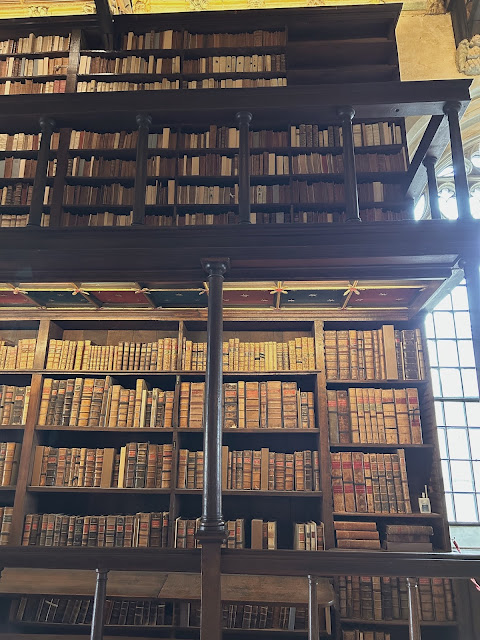It's been too long since I read a C.S. Lewis book. But this is one I have been wanting to re-read for a long time, and to read with the companion book by Michael Ward, After Humanity. Why is is titled After Humanity? If you are familiar with the message of The Abolition of Man, you know it is C.S. Lewis's warning to humanity from his perch in 1943 (he gave three speeches at Durham University that became this book) on the affects of subjectivism and the future of humanity. Living the post-modern, post-truth culture that we are in today, this warning from the past is all too familiar in what is pervading all areas of our lives. It is not a cheerful message, and he hitting very close to home in today's world.
Needless to say, likely because of its relevance and because I have read it a couple times before, I flew through the book again along with the wonderfully commentated companion book by Dr. Ward. Lewis's book is very slim yet dense and thought provoking. Of course, being familiar with the book already I knew what the arguments were and where Lewis goes with it all. But the deeper analysis of what he was saying, or what he was referring to, thanks to the companion book, I am able to better perceive the arguments he lays forth in his masterful ways, keeping in mind in such a slim volume he does not cover all angles and has some missing pieces such as addressing arguments that could be made against his own.
Are things beautiful, good, and true just for us as individuals, or can we speak and feel about them in ways that are us beyond our isolated perspectives into a shared discourse of objective value? (After Humanity, pg 14)
Lewis jumps right into the issue from the start, using a concrete example of school textbook which teaches on controlling language, and at the same time displays lessons on subjectivism (eliminating a sense of shared morality). Lewis then discusses the danger of entering these radical yet subtle ideals the authors of the textbook seek to do in controlling language. The sense of accepted moral objective Lewis calls the Tao (he uses this term as a means to be applicable to anyone in any culture, not based on religion, this sense of similar moral values that all would agree on and obey through life, no matter their religion). How straying from this set of moral values can lead to a very dangerous end.
Ward explains, "the universally accessible Tao, and all therefore agree in principal on the objectivity of moral value. The Tao is not something that human beings simply make-up; it is something they discover." When someone steps outside this moral value standard, they step into a void. They lose all sense of framework for practical reason and decent moral choices. They are free to act of course, against the standard morals, they can abandon objective value, they can choose to bring about their own abolition. This is the message of the book.
Lewis writes, "You say we shall have no values at all if we step outside the Tao. Very well: we shall probably find that we can get on quite comfortably without them. Let us regard all idea of what we ought to do simply as an interesting psychological survival: let us step right out of all that and start doing what we like. Let us decide for ourselves what man is to be and make him into that: not on any ground of imagined value, but because we want him to be such. Having mastered our environment, let us know master ourselves and choose our own destiny."
Lewis stood from a place in history during WWII where totalitarian dictatorships and controls of government were very serious matters that were reality. He warns against having moral blindness, for to see through all things is the same as not to see.
If you are looking for a way to engage with today's issues from a perspective outside of today's culture, seek out C.S. Lewis. You will be wiser for it, and better equipped to face what we are seeing today.




.JPG)



.JPG)

.JPG)






